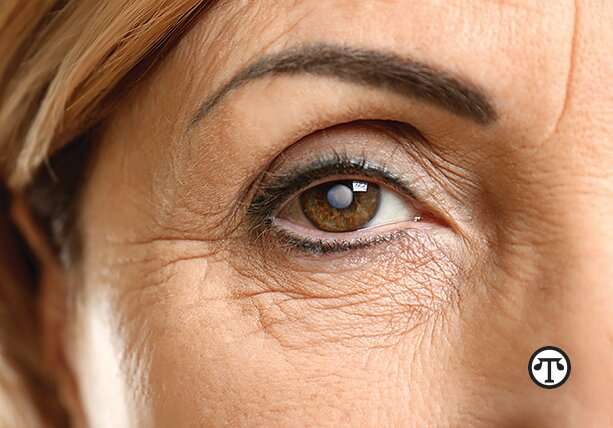FOR YOUR HEALTH: Why do some people become overweight?
 Many factors, including consuming more calories than you need from food and beverages, lack of sleep, and low levels of physical activity, may play a part in gaining excess weight. Here are some factors that may influence weight and overall health.
Many factors, including consuming more calories than you need from food and beverages, lack of sleep, and low levels of physical activity, may play a part in gaining excess weight. Here are some factors that may influence weight and overall health.
The world around you. Your home, community, and workplace all may affect how you make daily lifestyle choices. Food and beverages high in fat, added sugar, and calories are easy to find and sometimes hard to avoid. And they often cost less than healthier choices like fruits and vegetables. On top of that, smartphones and other devices may make it easy for you to be less active in your daily routine.
Families. Overweight and obesity tend to run in families, suggesting that genes may play a role in weight gain. Families also share food preferences and habits that may affect how much, when, and what we eat and drink.
Medicines. Some medicines, such as steroids, and some drugs for depression , and other chronic health problems, may lead to weight gain. Ask your health care professional or pharmacist about whether weight gain is a possible side effect of medicines you are taking and if there are other medicines that can help your health without gaining weight.
Emotions. Sometimes people snack, eat, or drink more when they feel bored, sad, angry, happy, or stressed – even when they are not hungry.
Lack of sleep. In general, people who get too little sleep tend to weigh more than those who get enough sleep. There are several possible explanations. Sleep-deprived people may be too tired to exercise. They may take in more calories simply because they are awake longer and have more opportunities to eat. Lack of sleep may also disrupt the balance of hormones that control appetite.
Consuming Healthy Food and Beverages
Being aware of food portion size, the kinds of foods and beverages you consume, and how often you have them may be a step to help you make healthier food choices.
What kinds of foods and drinks should I consume?
Consume more nutrient-rich foods. Nutrients – like vitamins minerals and dietary fiber – nourish our bodies by giving them what they need to be healthy. Adults are encouraged to consume some of the following foods and beverages that are rich in nutrients: fruits and vegetables, whole grains, like oatmeal, whole-grain bread, and brown rice, seafood, lean meats, poultry, and eggs
beans, peas, unsalted nuts, and seeds, sliced vegetables or baby carrots with hummus, fat-free or low-fat milk and milk products.
If you’re sensitive to milk and milk products, try substituting, nondairy soy, almond, rice, or other drinks with added vitamin D and calcium, lactose-reduced fat-free or low-fat milk, dark leafy vegetables like collard greens or kale.
Fruit, colorful veggies, beans, fish, and low-fat dairy products are rich sources of nutrients that give our bodies what they need to be healthy.
Consume less of these foods and beverages.
Some foods and beverages have many calories but few of the essential nutrients your body needs. Added sugars and solid fats pack a lot of calories into food and beverages but provide a limited amount of healthy nutrients. Salt does not contain calories, but it tends to be in high-calorie foods. Adults should aim to limit foods and drinks such as sugar-sweetened drinks and foods, foods with solid fats like butter, margarine, lard, and shortening, white bread, rice, and pasta that are made from refined grains, foods with added salt (sodium), whole milk.
Easy snack ideas. Instead of sugary, fatty snacks, try fat-free or low-fat milk or yogurt, fresh or canned fruit, without added sugars




 A little help from a good coach can make a big difference in your health and happiness.
A little help from a good coach can make a big difference in your health and happiness. (NAPSI)—You may remember the old saying, “An ounce of prevention is worth a pound of cure.” That’s never been more true than it is right now about good health and older adults, especially when it comes to protecting yourself during what is commonly known as respiratory disease season (fall through early spring).
(NAPSI)—You may remember the old saying, “An ounce of prevention is worth a pound of cure.” That’s never been more true than it is right now about good health and older adults, especially when it comes to protecting yourself during what is commonly known as respiratory disease season (fall through early spring).


 For many people, the gifts, gatherings, eating and drinking at this time of year take a toll on their mental health. Mental health experts share some things you can do to help avoid holiday-related challenges.
For many people, the gifts, gatherings, eating and drinking at this time of year take a toll on their mental health. Mental health experts share some things you can do to help avoid holiday-related challenges. CVS Pharmacy can help you and your family fight the flu this season.
CVS Pharmacy can help you and your family fight the flu this season.